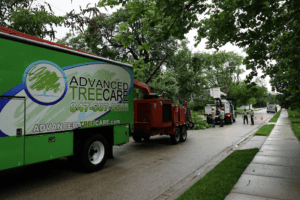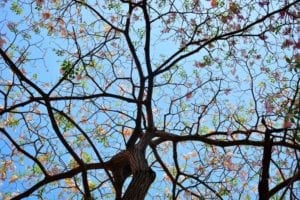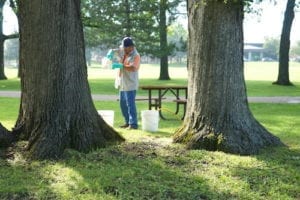Caring for Your Trees Over the Winter
Autumn is when trees really shine, bursting out in magnificent colors. In fact, the season’s other name—fall—is for the glorious dropping of these beautiful leaves.
Did you know, though, that when fall is over, and trees become dormant over the winter, they still require your care? Protecting your trees and ensuring their continued health requires essential winter tree care.
Here’s a few simple rules of thumb to guide your winter tree care this season:
Water until the ground freezes
Just because the warmest days of the year are behind us doesn’t mean you shouldn’t water your trees any longer. Fall can, in fact, be a dry season some years. Water your trees throughout the fall and early winter until the ground fully freezes. In our area, this can be as late as the end of December.
Newly planted or young trees that still have a small root mass especially need continued watering. And, when it comes to watering, go for low and slow so that you deliver the water directly down to the tree’s root zone. How often and how long you should water depends on tree species, soil type, and our weather conditions. You can check the soil and your tree’s foliage to determine if your tree is over- or under-watered, or you can consult one of our experts.
Protect roots with mulch application

Before the heavy snows and ice arrive, mulch around each tree with wood chips, bark, or other organic material. You should apply two to four inches of mulch spread over the top of the entire root zone. The mulch will insulate against temperature extremes while also nourishing the soil and preserving moisture levels. Be sure to keep the mulch layer at least three inches away from the base of the tree trunk to allow the tree to properly breathe.
Remove stakes or ties
While stakes or ties can provide some stability for newly established trees, these items should be removed before winter. Trees will establish more quickly and develop stronger trunk and root tissue without these aids.
Prune branches
Winter can be an optimal time for pruning because trees are dormant. In fact, pruning can help reduce the chance that a winter snowstorm or ice storm will damage your tree. Be sure to engage a professional tree service to prune your trees, so that the tree is properly cared for. Pruning cuts should be left uncovered, and proper pruning cuts should be made just outside the branch collar.
Advanced Tree Care combines top-notch equipment, cutting-edge technology, and well-trained staff to provide emergency tree removal and tree maintenance services. With a presence in nine counties and two states, we work daily to provide unparalleled customer service, safety, and efficiency—as well as the expertise to beautify your landscaping and community. Advanced Tree Care isn’t just our name—it’s also our purpose!
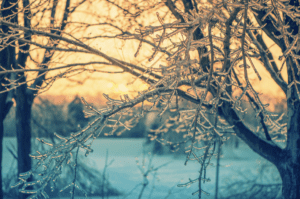 Think of your own health. Some people only go to the doctor when something is wrong. Sometimes, the doctor can fix you, but if you have waited too long to check out a problem, there may be more permanent damage. As such, health advocates usually recommend people get annual check-ups so the doctor can catch any problems before they become too serious.
Think of your own health. Some people only go to the doctor when something is wrong. Sometimes, the doctor can fix you, but if you have waited too long to check out a problem, there may be more permanent damage. As such, health advocates usually recommend people get annual check-ups so the doctor can catch any problems before they become too serious.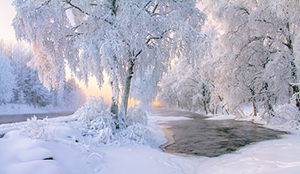 The timing for your winter preparation can be extended through several months. Some steps can be done earlier, while some steps require more precise timing.
The timing for your winter preparation can be extended through several months. Some steps can be done earlier, while some steps require more precise timing.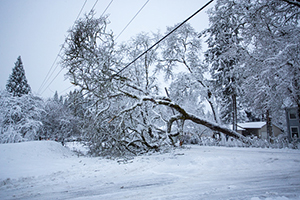 A primary reason many homeowners choose to plant trees around their property is to
A primary reason many homeowners choose to plant trees around their property is to 